A data architect executes the following script:
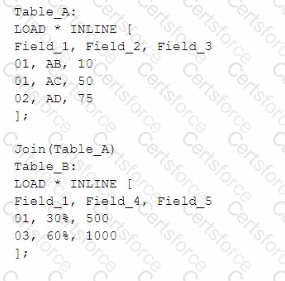
What will be the result of Table.A?
A)

B)

C)
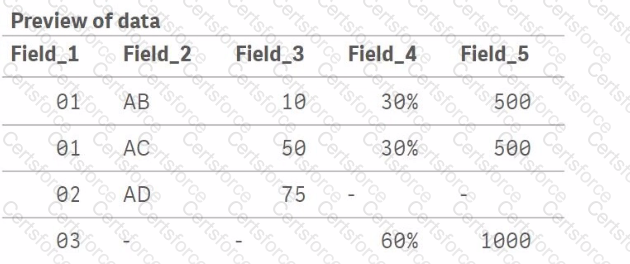
D)
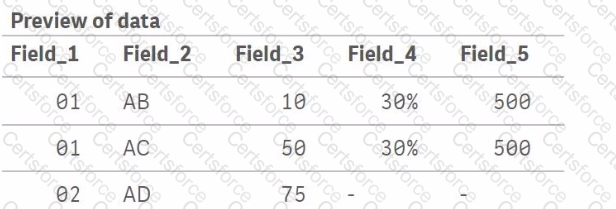
Exhibit.

A chart for monthly hospital admissions and discharges incorrectly displays the month and year values on the x-axis.
The date format for the source data field "Common Date" is M/D/YYYY. This format was used in a calculated field named "Month-Year" in the data manager when the data model was first built.
Which expression should the data architect use to fix this issue?
A data architect receives an error while running script.
What will happen to the existing data model?
A company needs to analyze daily sales data from different countries. They also need to measure customer satisfaction of products as reported on a social media website. Thirty (30) reports must be produced with an average of 20,000 rows each. This process is estimated to take about 3 hours.
Which option should the data architect use to build this solution?
A table is generated resulting from the following script:
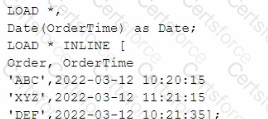
When the data architect selects a date, some, but NOT all, orders for that date are shown.
How should the data architect modify the script to show all orders for the selected date?
A)
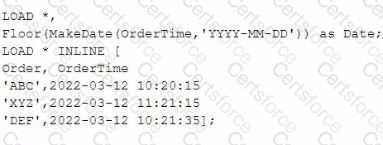
B)
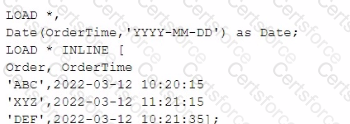
C)
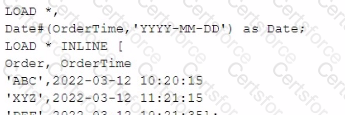
D)

A data architect needs to load Table_A from an Excel file and sort the data by Reld_2.
Which script should the data architect use?
A)

B)

C)

D)

A data architect needs to load large amounts of data from a database that is continuously updated.
• New records are added, and existing records get updated and deleted.
• Each record has a LastModified field.
• All existing records are exported into a QVD file.
• The data architect wants to load the records into Qlik Sense efficiently.
Which steps should the data architect take to meet these requirements?
Exhibit.
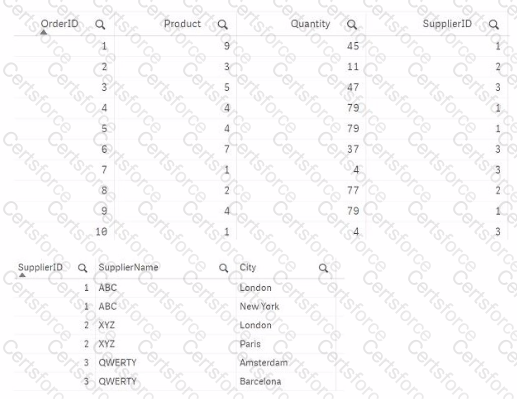
Refer to the exhibits.
The Orders table contains a list of orders and associated details. A data architect needs to replace the SupplierlD with the SupplierName using the second table as the source.
The output must be a single table.
Which script should the data architect use?
A)

B)

C)

D)

A data architect needs to develop three separate apps (Sales, Finance, and Operations). The three apps share numerous identical calculation expressions.
The goals include:
• Reducing duplicate script
• Saving time on expression modifications
• Increasing reusable Qlik developer assets.
The data architect creates a common script and stores it on a file server that Qlik Sense can access. How should the data architect complete the requirements?

Refer to the exhibit.
A data architect needs to create a data model for a new app. Users must be able to see:
• Total sales for each customer
• Total sales for a given state
• Customers that have not had any sales
• Names of salesperson and regional account managers
• Total number of sales by date
Which steps should the data architect perform to meet these requirements?
Which steps should the data architect perform to meet these requirements?